WHY DO CPR?

I was teaching a First Aid class last week, and when addressing the resuscitation rates between CPR only (about 15%) compared to CPR with an AED (about 75%), I was asked ‘Why do CPR at all then?’ As I hear this question often, it prompted me to address ‘Why we do CPR’.
CPR Only
CPR is a vital emergency procedure that can significantly increase the chances of survival for someone experiencing cardiac arrest (someone who is unresponsive and not breathing). When administered promptly and correctly, CPR can sustain blood flow to vital organs until EMS or medical help arrives. However, when an automated external defibrillator (AED) is used in conjunction with CPR, the outcomes are notably improved, underscoring the importance of rapid defibrillation in cardiac arrest scenarios.
CPR involves chest compressions and rescue breaths, and is the cornerstone of first aid for cardiac arrest. The objective is to manually pump oxygenated blood to the brain and heart; not striving solely for resuscitation, but delaying brain and organ damage due to loss of oxygen. The process of brain damage can occur in as little as four minutes, magnified as each minute passes. Without intervention, the chances of survival decrease rapidly.
CPR and AED
However, when an AED is used alongside CPR, the survival rates improve dramatically. AEDs are portable devices that analyze the heart’s rhythm and deliver an electric shock if needed. These devices are designed to be user-friendly, with voice prompts guiding even untrained individuals through the process. When an AED is applied within the first few minutes of cardiac arrest, the chances of survival can increase substantially. Research indicates that the combination of CPR and early defibrillation with an AED can yield survival rates of up to 75% or higher in some settings. The key to success is the rapid deployment of an AED, ideally within the first 3 to 5 minutes after a person collapses. This window is often referred to as the “golden period,” where the heart is more likely to respond to defibrillation.
The effectiveness of CPR and AED together highlights the importance of public access to AEDs in places where large numbers of people gather, such as airports, sports arenas, schools, and shopping centers. Many lives could potentially be saved if more public spaces were equipped with these devices, coupled with ongoing CPR training for the general population.
WHY do CPR?
CPR alone can provide some support during cardiac arrest, the addition of an AED significantly improves the chances of survival. The key to saving lives lies in a swift and coordinated response, with early CPR initiation followed by rapid defibrillation. Keeping the oxygen pumping through the system can not only be a matter of saving a life, but preserving the person (we know and love) behind that life. Every second counts!
Do you have the life-saving tools that undoubtedly make a profound difference in cardiac arrest outcomes for our loved ones, co-workers and strangers?

Kathryn Davies
President / Owner
Life’s Emergency Training
WSIB Approved EFA/SFA
